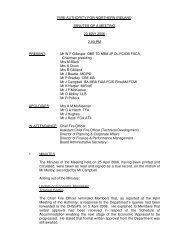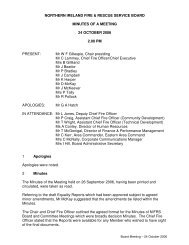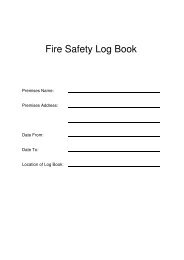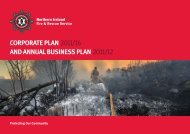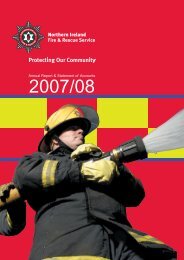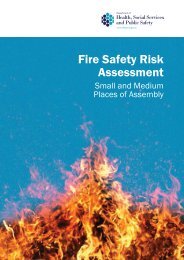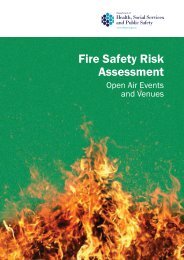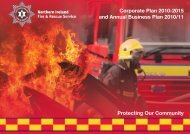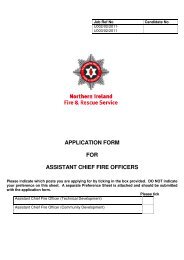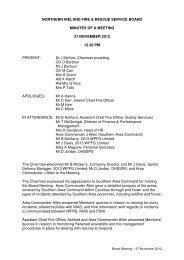A Guide To Reducing The Number Of False alarms From fire
A Guide To Reducing The Number Of False alarms From fire
A Guide To Reducing The Number Of False alarms From fire
You also want an ePaper? Increase the reach of your titles
YUMPU automatically turns print PDFs into web optimized ePapers that Google loves.
<strong>The</strong> owners, occupiers, or other person with control over a building witha <strong>fire</strong>-detection and <strong>fire</strong>-alarm system should agree which of them will beresponsible for the system. That person should then nominate a suitableperson who agrees to be responsible for supervising the system. <strong>The</strong> personnominated should have received appropriate training or have the skills,knowledge or experience needed to make sure that:• the system remains in good working order and is properly maintained;• faults are dealt with quickly and efficiently;• those who have to take specific action when a <strong>fire</strong> alarm goes offhave appropriate training (see ‘Action to take’ on page 9);• false <strong>alarms</strong> are investigated and action taken to solve any problem;• activities which may affect the system (for example, processes whichmay produce heat or smoke, redecorating or a change in manufacturingprocesses) are controlled; and• maintenance or other work is carried out on the system only by acompetent person.If the person nominated needs training, you can get advice from:• the company that installed the <strong>fire</strong>-detection and <strong>fire</strong>-alarm system;• the company that maintains the system; and• your local <strong>fire</strong> and rescue service.If these organisations cannot providetraining, you can get further helpfrom the BFPSA. <strong>The</strong>ir details aregiven on page 14 of this booklet.6




